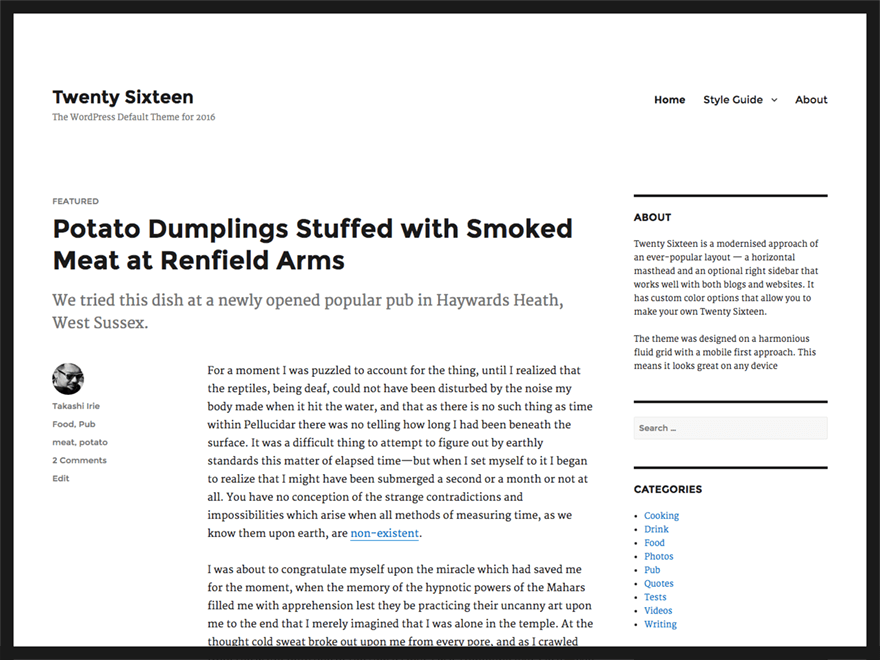With the upcoming release of the new WordPress default theme, Twenty Sixteen, many in the WordPress community are discussing this particular theme in particular, and default themes in general. For example, WordPress committer Aaron Jorbin brings up a number of important points regarding the WordPress default theme, including that it serves as a non-threatening way for people to contribute to WordPress, whether SaSS should be used in WordPress default themes, and makes the argument that it should not be used. (I agree.)
Jeff Chandler and I discussed Twenty Sixteen during last week’s WP Weekly podcast, and I told him what I tell anyone who will listen to me:
WordPress default themes should serve as an example of best practices for theme development and as a learning tool for new users.
Here’s what I mean:
There’s a general structure for 90% of websites on the web: they have a header, navigation, maybe another minor navigation, sidebar, main content, and footer. They’ll have a blog/news section, with a list of posts, and individual post pages. A good site is well built semantically, is responsive, and accessible. A solid WordPress default theme would cover that ground in a way that guides both new and experienced users in how to build a great theme. It could even serve as the jumping off point for new themes which would use the default theme as the parent. The ultimate parent theme.
But most important to me is that it should be a learning tool. I learned to build WordPress themes by first taking the Kubrick theme and modifying it, then modifying it more, and then even further. It was a solid theme with the layout needed for most sites, and was (at least I thought then) well coded and showed me how to use WordPress template tags properly.
For me, the default theme is less about me and the “older” generation of WordPress users. It’s about helping those who want to learn WordPress.
My two cents.


